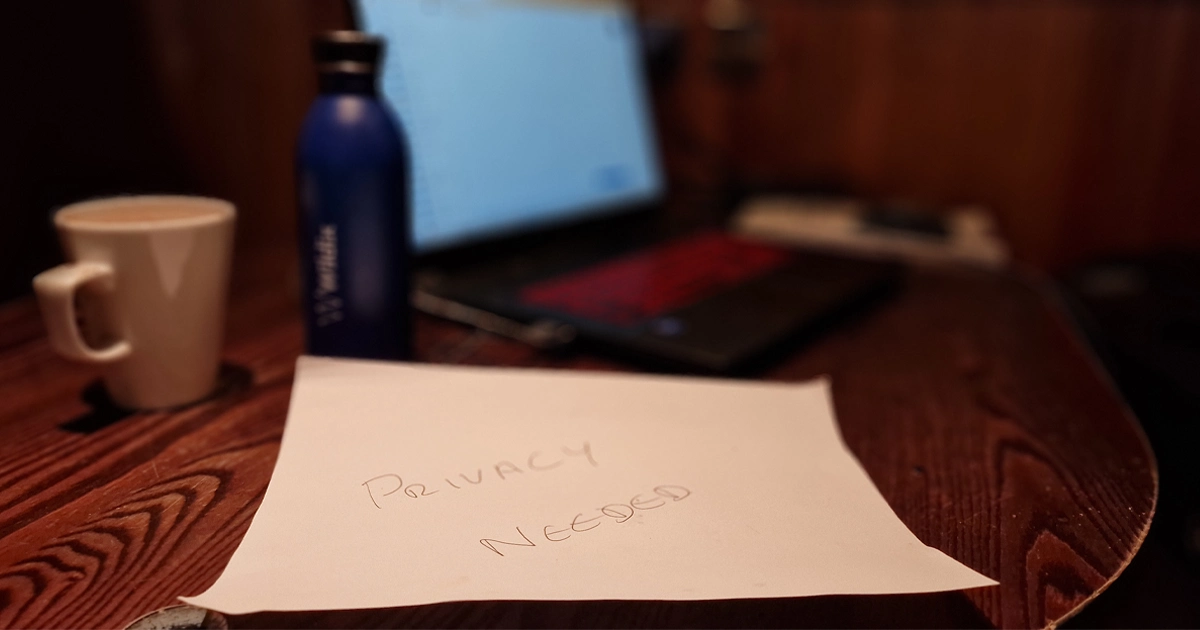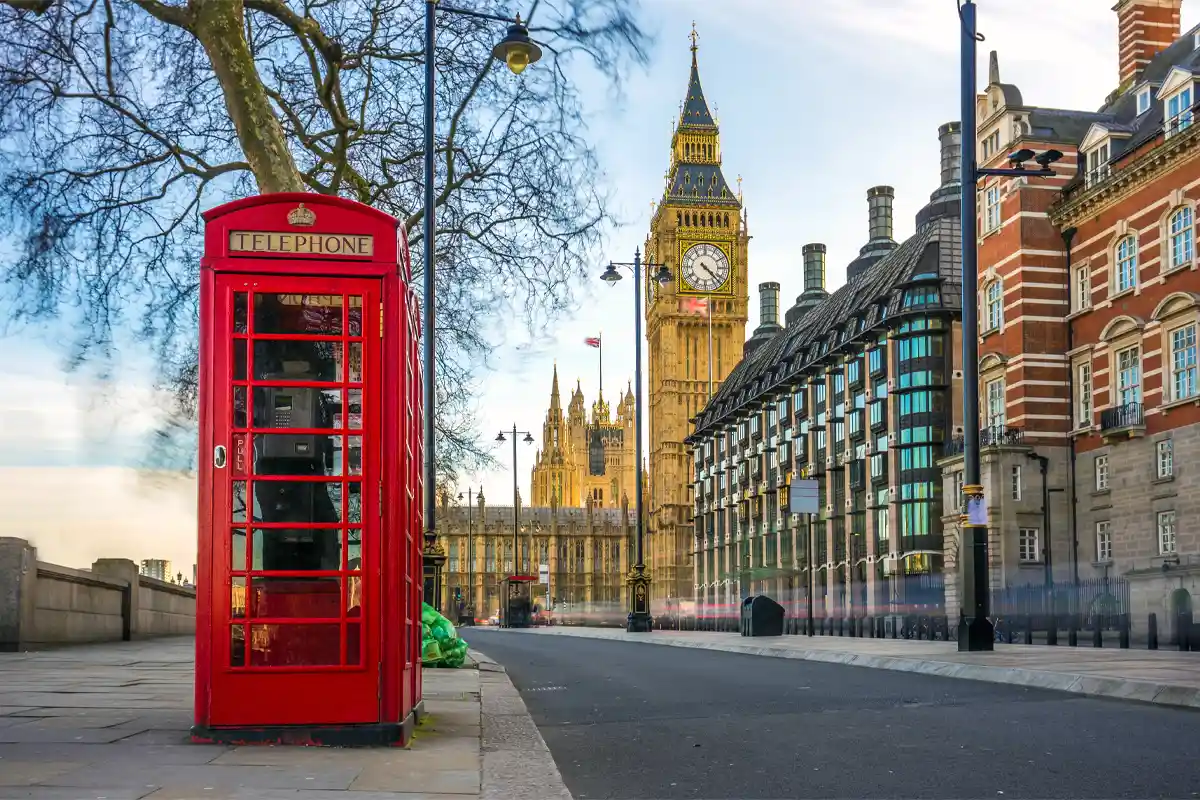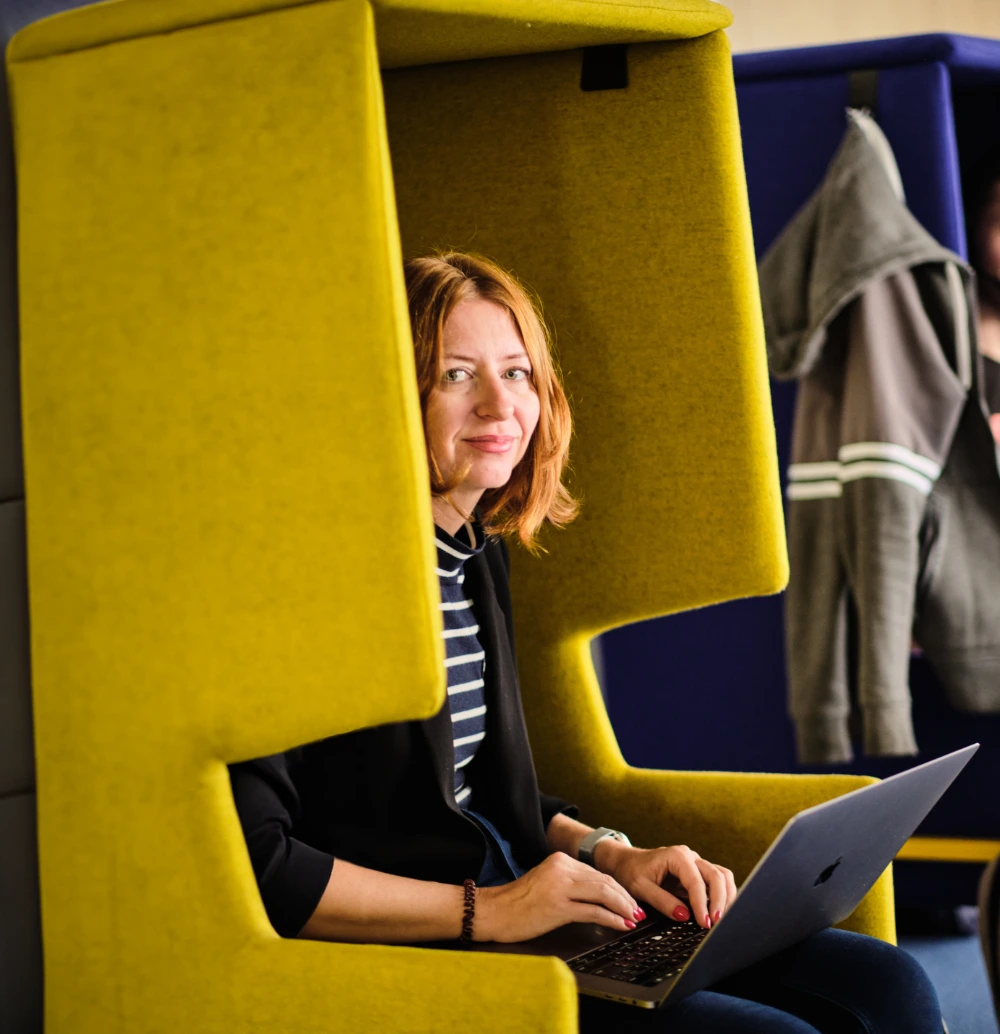
UCaaS is a crucial part of the office landscape, yet there are numerous open-plan offices where privacy is not available. While this is often fine for everyday sales calls and answering customer service queries, there are times when it’s necessary to have a little more privacy. An office phone booth is the answer in many cases.
An office phone booth is simply a private cubicle that’s installed in an office. The door is usually tinted, and it’s somewhat soundproofed. The result is essentially a small hideaway where people can conduct sensitive conversations away from the hubbub of an open-plan office.
Typically, office phone booth pods are far cheaper and much more effective than installing numerous private offices, so for that reason, they’re often attractive to companies. Yet they’re not heavily utilized, despite their innumerable advantages.

The History of the Office Phone Booth
The original phone booth was created in 1881 in Germany, called the Fernsprechkiosk — which literally means “telephone kiosk.” This model used a ticketing system to buy access to calls. The first coin-operated version was invented in 1889 in the United States.
The most famous design of the phone booth (or phone box) is the UK’s red telephone box, first rolled out in 1920. They swiftly became part of the landscape, although the rise of the mobile phone meant most of them were removed in the 2010s.
Yet office phone booths weren’t well used. That’s because for many years, if you were important enough to need a private phone, you were important enough to have an office. Phone lines were expensive — so most people had to use the general office phone to make calls (if they were permitted).
But the changing economy and a huge shift in technology meant there was a change in how we used communications. Moving from a manufacturing economy, where employees were making physical products, to a service economy, where employees provided direct services, meant that more and more people needed telecommunications.
Added to that, rising costs in various cities meant that open-plan offices became the norm. The privacy of an office was no longer guaranteed for most employees, and the huge increase in so-called cubical farms in the ‘80s and ‘90s reduced privacy hugely.
Even then, most people could head into an office — they were often reserved for management — if they needed some privacy for a sensitive call.
All was relatively normal until the pandemic of 2020. Suddenly, huge swathes of the workforce were told to work remotely, if they could. That created a seismic shift in working patterns. Remote work became unremarkable.
Yet many still needed separation between work and home. Shared workspaces became more popular, with many companies paying for them — there are around 35,000 around the world, with that number projected to increase by 21% over 2024 alone. They offered many advantages, but privacy was not one of them. The result? The office phone booth was suddenly in huge demand.

Technology and Office Phone Booths
The office phone booth is typically a fairly simple affair. It needs to be entirely private, allowing people to have conversations without being seen or overheard. It also needs to have some lighting, and it must be easy to lock — nobody wants to be barged in on when having a sensitive conversation.
One thing that is sometimes forgotten is the need to have a good internet connection. In some cases, that can be supplied through wired Ethernet, but many modern laptops, especially the ultra-thin versions favored by many business professionals (such as Macs) don’t have Ethernet ports. This means they need a solid Wi-Fi signal.
Unfortunately, some phone booths for offices are designed with a lot of metal, which can block signals. A wireless access point in each one can mitigate this, but it works out as a pricier option.
If designed badly, an office phone booth pod can feel confining and uncomfortable. While you don’t want a small proportion of those in a co-working space to monopolize them, you also need them to be pleasant enough to sit in for hour-long meetings — especially those working in recruitment or those who need to have legally or financially sensitive meetings. A well-designed one doesn’t have these issues, and if well-managed, they can ensure a steady rotation of people.
I’ve worked in a number of spaces, and some are far better than others. The best understood what coworking actually meant and designed their offices and systems around that. The worst simply took a former office, put some chairs and desks in it and called it a coworking space, without any understanding of hotdesking, limited maintenance and few options for privacy.
Dan B, remote tech support for a large corporation
They also need to be well-ventilated or even air-conditioned. A small space in a hot room with a laptop and soundproofing results in high temperatures — you have a couple of heat sources and potentially limited airflow. No one wants to come out looking as though they’ve been for an intensive gym session.
Typically, a booking system is used to manage phone booth use, although it needs to be flexible enough to accommodate last-minute requests — common with HR, in particular.
Overall, the design of a phone booth in an office should be carefully considered to ensure comfort, privacy and practicality, with key systems implemented to prevent overuse by any one person.
The Office Phone Booth vs. Offices
Within a coworking space, there are often both private offices and open-plan spaces with a number of office phone booth pods available. There are advantages to both in a coworking space, of course.
| Open Plan + Office Phone Booth | Private Office | |
| Price | Low | High |
| Privacy | On demand but generally lower | High |
| Accessibility to coworkers | High | Moderate |
| Ability to focus | Moderate | High |
| Secondary functions | Professional-looking space | Private meeting area Professional backgrounds Interview space |
| Business address | Sometimes | Sometimes |
| Flexible working patterns | Yes | Yes |
The big advantage of an office is that it lets you meet with people privately. It provides a good atmosphere for in-person meetings, and it allows you to create a professional-looking space even on video calls.
However, you can get much of that with a coworking space, as well. Most offer some sort of upgrade path when you need training rooms or meeting rooms on demand. As a result, they can work out to be very cost-effective for businesses looking to reduce overhead. And even better, they’re often available for a far larger spread of hours than a traditional office space.
Phone Booths for Offices and Accessibility
One thing that often gets overlooked is the need to provide accessible spaces for different users. Someone in a wheelchair, for example, may not be able to access a traditional phone booth design, so there needs to be careful consideration of their needs. Every business (including coworking spaces!) must consider the needs of those with disabilities.
A solution might be to make all office phone booths accessible to wheelchair users through the use of sit-stand desks, more space within the pod and ramps leading up to the pods. Some businesses may offer private office space to wheelchair users in lieu of this, however. This is a less elegant solution, however, and it misses the point of having a coworking space where the user can access human interaction on a regular basis, something that many crave from an office-style setup.
Offices often don’t understand the needs of disabled workers like me. Instead, they accidentally restrict access to key parts of the space, whether it’s the lack of space around the desks or even access to the coffee machines! I end up sometimes having to stand and awkwardly migrate to a chair, a process that can be very frustrating and painful. Any coworking space that addresses these issues make it easier for everyone to work, not just disabled people.
Dan B, remote tech support for a large corporation
The key is flexibility and ensuring coworking spaces have customized spaces that meet the needs of a wide range of users.
UCaaS and Coworking Spaces
Even if a coworking space doesn’t offer private office phone booths, they can still be effective places to work, especially when paired with UCaaS solutions, such as Wildix. Noise suppression, good video quality and good sound quality are essential when it comes to unified communications, so all you need is a great internet connection, and you’re ready to go.
For MSPs, coworking spaces offer a way for companies to finally implement flexible unified communications, and Wildix means they can do so without the need to set up VPNs or SBCs. These spaces often offer a professional working environment with a variety of professionals — they can often provide surprising insights into new ways of doing things from those other professionals as well. This is one of the key advantages of coworking spaces compared to the traditional office.
So what do UCaaS solutions need to offer to those who want to utilize coworking spaces, regardless of whether they offer a private office phone booth?
Voice, chat and video are obvious starting points, but most UCaaS solutions offer those. And for MSPs, these are very simple to implement for any cloud-based communications system. So MSPs need to offer a lot more flexibility than simple UCaaS.
Instead, they need to make working with others in a coworking space as easy as working within an office environment. This means they need a highly customizable solution that delivers the tools those employees need to do their jobs effectively. This could involve integrations through fully flexible APIs to key software — or it could even mean creating a quick iframe that streamlines a critical process.
UCaaS represents a huge opportunity for efficiency, regardless of where the employee is — and coworking spaces are just one possible option. Whether they’re in an open-plan office with phone booths or simply within a private room within that space, they must have the ability to access everything they need from a unified interface — true unified communications.
What About Offices Generally?
It’s not just coworking spaces that need an office phone booth solution. Pods are now being set up in offices and other locations around the world because of their efficiency in terms of space and privacy, especially when hotdesking is the norm. They can heavily improve employee productivity and satisfaction in a way that open-plan offices or even home working environments cannot. However, they must be carefully managed, as well, otherwise they become a de facto private office space for a small number of workers.
Again, confidentiality is key, and these spaces are needed for workers to have private conversations, especially in sensitive situations. Managers in particular must respect the privacy of those booths where possible.
Having well-defined guidelines for office phone booth use along with quality well-thought-out systems are key to making them a success.
The use of well-designed systems is absolutely essential, definitely. I’ve seen it where people hog the office phone booth pods all day, and it seemed absolutely unnecessary. To them, it was simply ‘their’ workspace. To us, it was a nuisance because there was a demand for these pods, and it took one out of circulation. At another coworking space, their use was much more tightly regulated, and established rules and a good booking system made the process much fairer. I think it’s much easier to manage them in a company office, provided those rules are adhered to.
Dan B, remote tech support for a large corporation
The Future of Office Phone Booth Pods
For many workspaces, the use of office phone booth pods is only going to increase. In addition, the increasing number of coworking spaces is going to create demand for them. MSPs who can install complete solutions can potentially target this market highly effectively, and those who deliver high-quality UCaaS can encourage companies to consider remote working with the use of coworking spaces. Overall, the demand for these solutions with good connections and solid tech support is only going to increase over the next few years, especially as businesses drop offices and streamline operations.
If you’d like to read more about UCaaS and the traditional contact center, take a look at our article on choosing between UCaaS and CCaaS.
For more insight on office work and how the changing paradigm around workspaces affects MSPs, subscribe to receive our magazine for free!